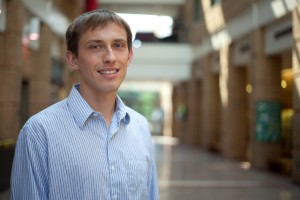Foiling airflow error
As a rule, areas of nearly discontinuous airflow, like shocks or shears, are best represented with h refinement, so named because h denotes the length of a mesh element’s side. It bisects each error-prone element to provide greater precision. In areas with smoother flows, error-causing elements are mathematically refined with higher-degree polynomial (p) approximations. “Increasing polynomial order is usually the best way to resolve smooth regions of the flow, where stuff happens relatively slowly,” Fidkowski says.
Researchers can hand-design meshes to apply the appropriate method based on expected flow characteristics. But “we don’t leave it up to the user to decide that,” Fidkowski says. The algorithm chooses the best option automatically based on output error. Users specify a single output, such as drag. The algorithm picks the best refinement option, h or p, that most reduces drag error with the least computational effort. Sometimes the algorithm detects flow discontinuities where none were suspected and automatically bisects mesh elements. “That’s not something we would have designed by hand,” Fidkowski adds.
Although Fidkowski focuses on aerospace, his methods could model other flows. He’s part of a Michigan group participating in the Consortium for Advanced Simulation of Light Water Reactors, one of five DOE Energy Innovation Hubs. “There might be a few outputs you really care about – critical outputs for the safety of the reactor that you want to get just right. You don’t want numerical errors and discretization errors polluting your results.”
Regardless of the application, Fidkowski wants to design more efficient algorithms that solve bigger problems on the exotic computer architectures to come. “We want to do real-world problems. We’re just skimming the surface of that.” Fidkowski also wants to make error estimation a routine part of uncertainty quantification, which puts a number on the degree to which a simulation’s results can be trusted, and of optimization to improve designs.
“The most exciting part is getting an algorithm to work,” he says – something that rarely happens on the first try. It’s just as important to disseminate what he learns to students. The flexibility to research and to teach thrills him and fills his days. “That’s when you know you’re doing things you like.”
About the Author
The author is a former Krell Institute science writer.





